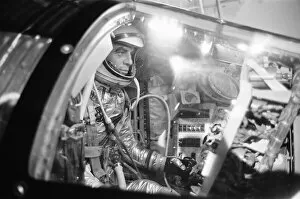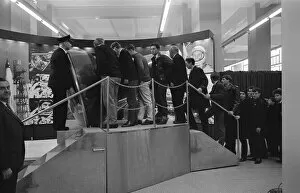Mercury Atlas 6 Collection
"Friendship 7: A Historic Journey to the Stars" On February 20, 1962, NASA's Mercury Atlas 6 mission marked a significant milestone in space exploration
All Professionally Made to Order for Quick Shipping
"Friendship 7: A Historic Journey to the Stars" On February 20, 1962, NASA's Mercury Atlas 6 mission marked a significant milestone in space exploration. Named Friendship 7, this iconic spacecraft carried astronaut John Glenn on his groundbreaking orbital flight. As we delve into the archives of history, we discover artifacts that tell the tale of this extraordinary mission. One such artifact is the first aid kit owned by John Glenn himself during his time aboard Friendship 7. Its contents symbolize not only preparedness but also courage in the face of unknown challenges. Inside the spacecraft, an interior view reveals a glimpse into Glenn's world as he ventured into uncharted territory. The cramped quarters and intricate controls highlight both the bravery and ingenuity required for this historic journey. The heat shield of Friendship 7 stands as a testament to its resilience against extreme temperatures encountered upon reentry. This vital component ensured Glenn's safe return to Earth and solidified his place in history as one of humanity's pioneers. Visitors at London's Science Museum eagerly await their turn to catch a glimpse of this legendary spacecraft. Patiently queuing up, they recognize its significance and marvel at its technological advancements that paved the way for future space missions. In October 1965, Mercury spacecraft Friendship 7 found its permanent home at the Science Museum in London. Its arrival was met with great excitement from enthusiasts who flocked to witness firsthand this remarkable piece of human achievement. Today, multiple exhibits showcase Friendship 7 within the museum walls - each display capturing different angles and perspectives. From close-up views highlighting intricate details to broader shots encompassing its entirety, visitors are transported back in time to relive those awe-inspiring moments. Friendship 7 continues to inspire generations with its legacy etched firmly into our collective memory. It serves as a reminder that through determination and collaboration, humanity can reach unimaginable heights – forever pushing boundaries beyond what was once thought possible.










